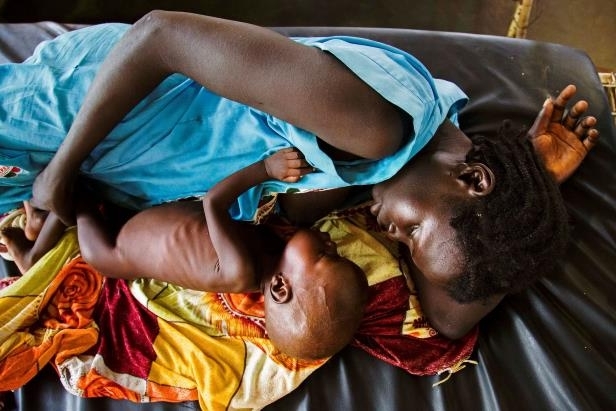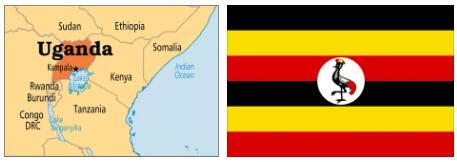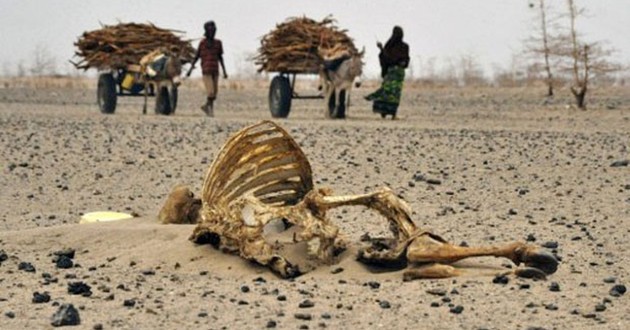The Hunger in Africa reaches at least 236 million people, according to the FAO (UN Food and Agriculture UN – United Nations). Africa is the continent with the largest number of people affected by hunger, based on a study conducted by COUNTRYAAH, which also offers African countries list.
African Country Facts by Nation
Causes
In Africa, the lack of food results from several factors such as the colonial process, the concentration of power, weather conditions, corruption of the authorities, low agricultural productivity, population increase, among others.

During colonization, the countries that occupied Africa withdrew from the territory material riches and raw materials that could serve for the development of the region. In addition, it enslaved its peoples, removing the young population that was able to work.
In the process of decolonization, to gain independence, some countries had to fight at length against their colonizers. This was the case in Algeria and Congo, for example.
In addition, we must consider the very internal conflicts of the African peoples, which after independence entered into civil war.
Hunger Map in Africa
Hunger figures on the African continent have been declining. In the 1980s images of Biafra (region of Nigeria) or Ethiopia were devastating where the population did not have the least nutrients to stand on.
Due to the economic growth experienced in the region over the last two decades, the rates are improving as we see in the map below. However, the numbers are far from ideal.
Three out of four people born in the sub-Saharan Africa region suffer from hunger, according to the UN. The situation is considered severe in the so-called Horn of Africa, where are the world’s poorest countries: Eritrea, Sudan, Ethiopia, Somalia, Kenya and Uganda.
Eritrea – East Africa
Eritrea is a state in Africa. The capital of the country is Asmara. Around 5.9 million Eritreans and residents of other nationalities live in Eritrea. The official languages are Tigrinya and Arabic. Eritrea covers an area of around 118,000 km². The highest mountain in Eritrea is the Dega at 3,047 meters. Neighboring countries are Ethiopia, Sudan and Djibouti.

South Sudan – East Africa
South Sudan is a country in Africa. The capital of the country is Juba. About 8.3 million people from South Sudan, people of other nationalities, live in South Sudan, making South Sudan one of the most sparsely populated regions in the world. The official languages are English and national languages. South Sudan covers an area of around 644,000 km² and is therefore around twice the size of Poland. Neighboring countries are Ethiopia, the Democratic Republic of the Congo, Kenya, Sudan, Uganda and the Central African Republic.

Uganda – East Africa
Uganda, the pearl of Africa, is a country in Africa. The capital is Kampala. Around 33 million Ugandans, Ugandans of other nationalities, live in Uganda. The official language is English. Uganda covers an area of around 236,000 km² and is about eight times the size of Belgium. The highest mountain in Uganda is Margherita Peak at 5,109 meters. Neighboring countries are the Democratic Republic of the Congo, Kenya, Tanzania, Rwanda and South Sudan.

Until 2008, an African’s per capita income per head was $ 1.25 a day. To understand the difference, a US per capita income is $ 55,200 and a Brazilian per capita is $ 11,530, according to the World Bank.
African Republics
- Republic of Ghana
- Republic of Kenya
- Kingdom of Morocco
- Republic of Namibia
- Republic of Niger
- Republic of Nigeria
- Republic of Senegal
- Republic of South Africa
- Republic of Tanzania
- Republic of Tunisia
- Republic of Uganda
- Republic of Zambia
- Republic of Zimbabwe
Wars in Africa

A warring country does not cultivate, tribes are constantly threatened and stolen by soldiers on both sides. In this way, farmers abandon crops, the period of food shortages begins and famine spreads.
Hunger is greatest in countries at war, as they absorb the ability to generate income and maintain the exploitative order of the conquered.
Civil war also creates displacement of populations who have no alternative but to go to refugee camps. There are at least 13.5 million refugees in Africa today, representing 38% of refugees worldwide.
Moving or entering refugee camps, victims of violence are at the mercy of international aid. Over the past three decades, famine-ridden African peoples have a 50 percent chance of being malnourished and half of their children will be out of school.
Population Increase

The food crisis is also favored by the population increase. Also according to the UN, in 1950, Africa was inhabited by 221 million inhabitants. The figure has risen to almost 1 billion in 2009. This is because Africa is still an eminently rural economy and more children mean more arms to work.
Likewise, there are few programs that allow family planning. Thus, the birth rate in Africa is 5.2 births per woman over a lifetime and is the highest in the world. To compare, in Brazil, the fertility rate is 1.8 children per woman, according to the IBGE (Brazilian Institute of Geography and Statistics).
Environmental problems
Environmental problems also raise the issue of hunger. Today, Africa lacks solutions to the erosion and desertification processes of deforestation. Areas with poor soil have lower chances of agricultural production and poor performance.

African environmental issues run into a lack of investment and competitiveness. International organizations act on the consequences of the problem and not the causes.
Corruption
Another turning point for hunger in Africa is corruption, with the highest rates in countries assessed by the NGO Transparency.
Aid money often ends up in the hands of corrupt politicians and does not reach those in need.
Solutions
It is the consensus of the UN, scholars, non-governmental organizations, world governments and African nations that there is no shortage of food for Africa. What is lacking is proper management of natural resources so that everyone can be fed.
The conditions faced by the African peoples result from policies of permanent exploitation. With commodity prices rising in the early 21st century, the continent has experienced significant growth rates and decreased infant mortality rates.
It would be necessary to capitalize on this good result, investing in education to create a virtuous cycle that would end hunger in Africa once and for all.